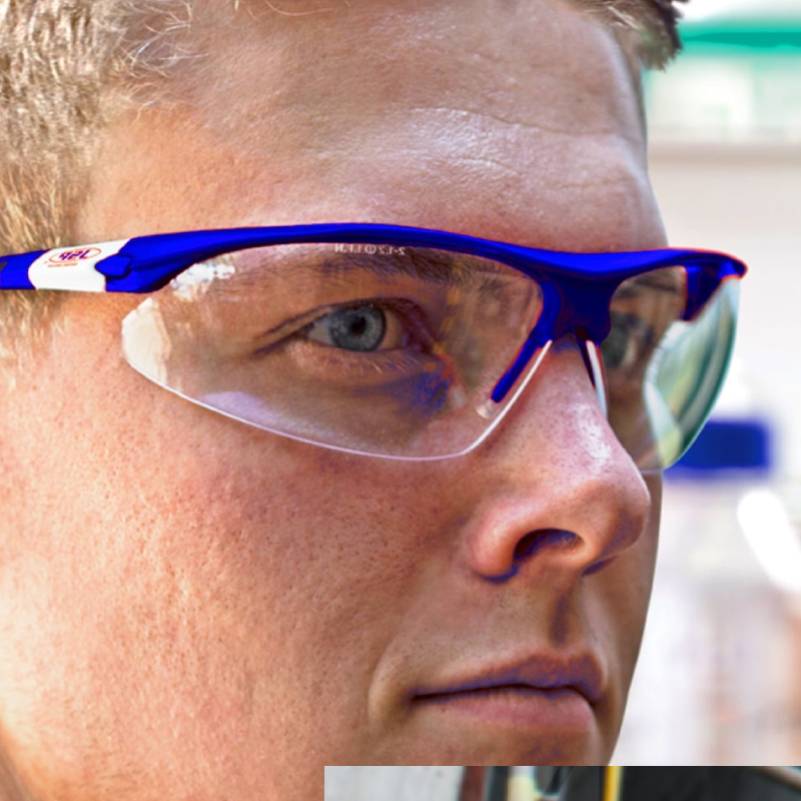Safety Eyewear Review
With new, possibly inexperienced, suppliers involved, it is now more than ever wise to require proof of ANSI compliance from new sources.

Safety Eyewear Review en
08/02/2023
With new, possibly inexperienced, suppliers involved, it is now more than ever wise to require proof of ANSI compliance from new sources.
THE purpose of this article is to review developments that have taken place in the industrial safety eyewear market within recent years, help the reader take full advantage of the present offerings, and possibly provide some insight into what may be around the safety eyewear corner.
Few safety product categories offer the fashion opportunity afforded by safety eyewear. The last few years have seen an explosion in eyewear's sex appeal. Brand names licensed by suppliers and more fashionable styling give the safety eyewear buyer more options in choosing models that will be proudly worn by employees. This means greater compliance. Many employers even encourage their employees to wear their eyewear home with the thought that preventing eye injuries off the job is as important as preventing eye injuries on the job.
There are now more than 30 industry suppliers of safety eyewear. The increased competition can only be good for the conscientious buyer. However, with new, possibly inexperienced, suppliers, it is now more than ever wise to require proof of American National Standards Institute compliance from new sources. In-house labs or offshore testing labs should be viewed with skepticism. Independent, accredited U.S.-based testing lab results are much more desirable.
New Features of Note
One feature recently offered to the market is polarization. A polarized lens affords the wearer protection from reflected glare and is the personal choice of many users. Combining polarization with the high-quality optical properties required by ANSI is difficult, and these lenses are expensive.
Probably the most exciting new feature recently available is magnifying bifocal type inserts in plano safety glasses. With the aging workforce in mind, these are a welcome addition. They are available in various powers and lens tints and can, in many situations, save the employer the much greater expense of custom prescription glasses.
There is a wide assortment of lens tints available to the safety eyewear buyer. Clear is, of course, the most popular and would be appropriate for the typical factory setting. The indoor/outdoor lens is a relatively new concept for safety glasses and in the vast majority of cases is simply a clear lens with a mirror coating. The practical effect is that, to the wearer, the lens is slightly darker than clear, thus making it a compromise for use both indoors and outdoors. Some buyers have mistaken this lens for a photochromatic lens, which would lighten and darken automatically as it is exposed to light. There is also an indoor/outdoor lens available that has a gradient tint--darker at the top fading to clear at the bottom.
Tints and Specialty Lenses
Lenses for outdoor use include gray, green, and blue block. Blue block can add contrast to shapes and possibly improve night vision when worn during the day. Mirrored lenses result in a slightly darker tint and also can make a dramatic fashion statement. Yellow and orange tints are available for enhanced clarity in low light conditions. It is worth mentioning that even though some tints can increase clarity and contrast, no lens can actually "magnify light."
Other specialty lenses are available, such as those for some types of welding, those to be worn when around certain types of indoor lighting, and those involving laser use.
Virtually all lenses on the market--with the exception of lenses in the ultra-inexpensive, throwaway "visitor spec"--have a hard coating for scratch resistance. A fog-free coating for increased safety in humid conditions may be well worth the money.
The concept of UV protection can be easily misunderstood. Some suppliers advertise 99 percent protection, some 100 percent protection, and some maximum protection. The bottom line is there is virtually no difference in ultraviolet protection from one safety glass to another.
Cleaning
Lens cleaning is important. The best cleaner is soap and water. Some solvents can creep into airtight spaces between the lens and frame and, in time, act on the uncoated edge of the lens, causing it to crumble. A dense fiber cleaning cloth can be handy. Never wipe a lens with a paper product; this can potentially scratch the lens.
Accessories can be helpful. A carrying case can protect a glass from scratching. A strap can be helpful in holding the glass firmly against the face but, of course, should separate from the glass in the event of an accident.
Comfort is Paramount
There is no reason to believe that safety eyewear suppliers will not respond to the future needs of the marketplace. Be vocal about the eyewear needs in your environment!
Soon, in a year or two, the safety eyewear market probably will be driven by comfort, image, and pizzazz. Eyewear is, without a doubt, the safety products fashion leader.
Source: OH&S



